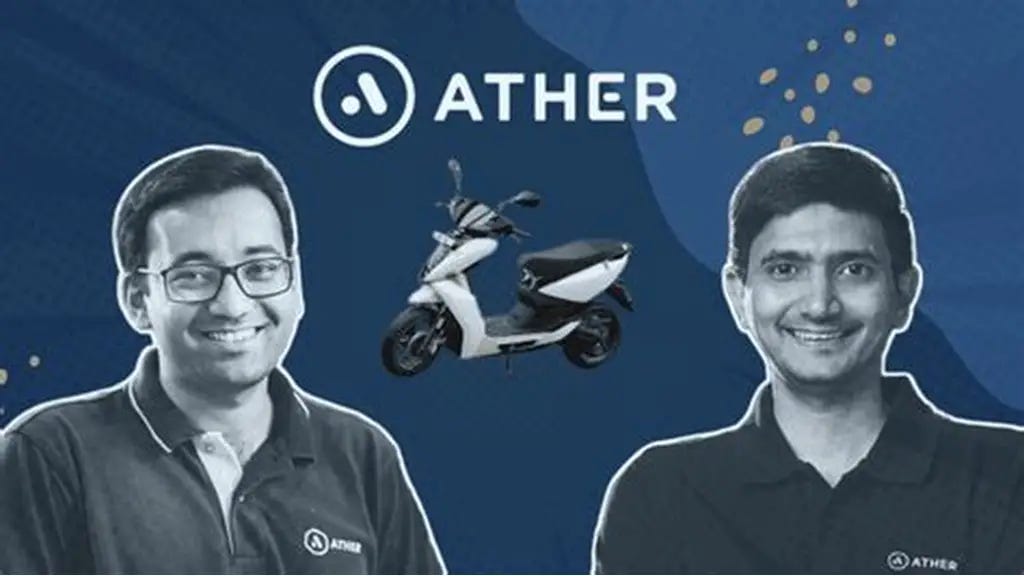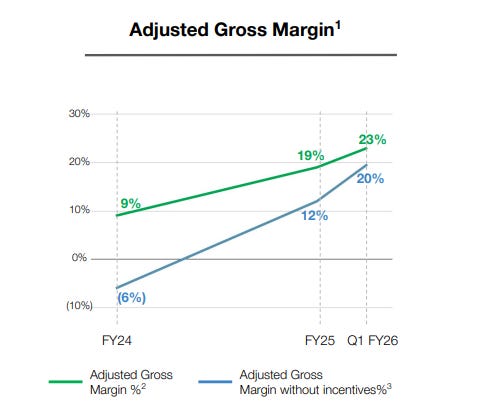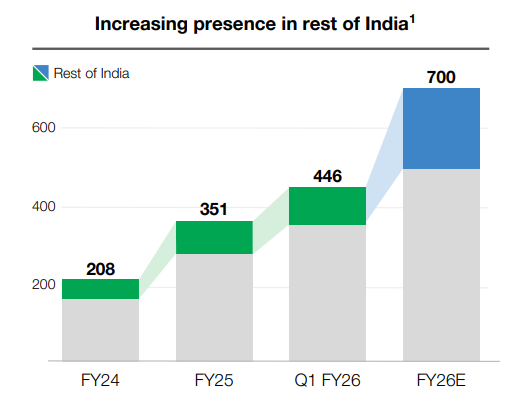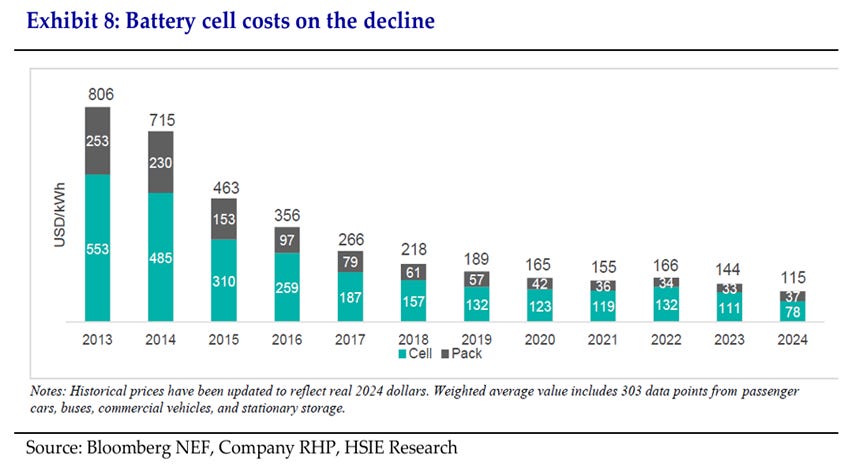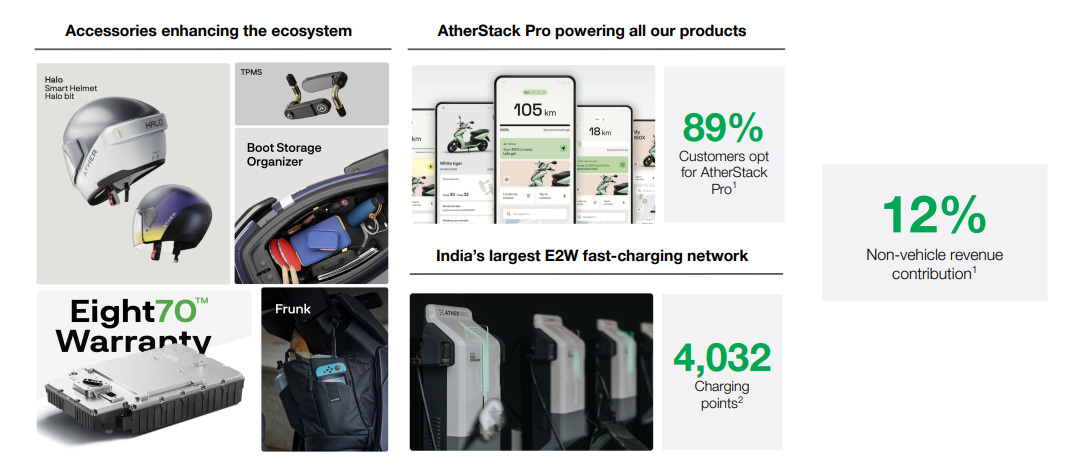How Did Ather Turn 7 Rupees Into 23 Rupees?
Ather Energy was dying! Making only 7 rupees profit on every 100 rupees. In just 24 months, they EXPLODED their profits to 23 rupees per 100!
Hello readers,
Welcome to another weekly edition of The Valuation Story
This week, let’s talk about something really exciting happening with Ather Energy. You know, the company that makes those cool electric scooters? They’re doing something remarkable with their profits, and I'd like to share this story with you.
From Struggling to Winning
So here’s what happened. Back in 2024, Ather was generating very little revenue on each scooter sold - only about 6.94% for every rupee of sales. That’s tough, right?
But then something changed. By 2025, they started making ~19% for every rupee. And guess what? In the first quarter of this year, they’re making ~23%. That’s more than three times better than where they started.
It’s like watching someone learn to ride a bike. At first, they’re wobbly and slow. But once they get the hang of it, they’re zooming around confidently.
More Stores, More Sales
Right now, Ather has 446 stores across India. But they want to open 700 stores by next year. Why does this matter?
Think of it like this - if you have one store, you can only sell so much. But if you have ten stores, you sell ten times more. And when you buy in bulk for all your stores, each EV costs less. That’s exactly what’s happening with Ather.
Cheaper Batteries, Better Profits
Here’s something interesting. Ather used to use expensive batteries called NMC. Now they’re switching to cheaper ones called LFP, which cost 10-15% less.
Plus, battery prices worldwide are getting cheaper - from what used to be very expensive to just $80-90 per kWh of power. Since batteries are the most expensive part of an electric scooter, this saves them a lot of money.
It’s as if the price of flour suddenly dropped by 15% - every bakery would make more profit on their bread.
The Software Goldmine
Now here’s the really clever part. Ather doesn’t just sell scooters - they also sell software called “Ather Stack” that goes with it. 88% of people who buy the scooter also buy this software.
Why is this so good for business? I feel, once you create software, you can sell it to thousands of people without it costing you much extra. It’s like writing a song - you write it once, but you can sell millions of copies.
This software business and other non-vehicle businesses now make up 12% of all their money, and it’s much more profitable than selling scooters.
Staying Premium
While other companies like Ola are trying to make the cheapest scooters possible, Ather decided to stay premium. They’re like the iPhone of electric scooters.
This is smart because premium customers pay more and don’t mind spending extra for quality. Their new Rizta model is doing well, and they’re planning more models that will appeal to different types of customers.
As per my information, they are going to launch the EL plateforme where they will introduce low-cost e2W for the masses, and I am feeling that if it works, then Ather will break the record.
The Pizza Shop Example
Let me explain something called “operating leverage” with a simple example.
Imagine you run a pizza shop. Your rent, ovens, and basic costs are the same whether you sell 10 pizzas or 100 pizzas a day. But every extra pizza you sell adds to your profit without adding much to your costs.
That’s what’s happening with Ather. Their research costs and marketing expenses stay roughly the same, but as they sell more scooters, each sale adds more to their profit.
Better Factory, Better Business
Ather is building a new, modern factory in Aurangabad that should start working next year. New factories are usually more efficient - they can make more scooters with less waste and lower costs.
It’s like upgrading from an old, slow computer to a brand new one - everything just works better and faster.
Making Things Locally
Ather is also trying to buy more parts from Indian companies instead of importing them. This is smart because:
It costs less to transport
They don’t have to worry about currency changes
They can work more closely with suppliers
Every rupee they save on costs goes straight to their profit. But you know what building everything locally will take more time because we are still dependent on China or other countries for importing raw materials for batteries, motors and so on.
But Wait, There Are Risks
Now, I always like to be honest about the challenges:
Other companies might start competing harder
Battery prices could go up again
Can they maintain quality while growing so fast?
How many people actually want premium electric scooters?
What Does This All Mean
Ather’s journey from making 7 cents per rupee to 23 cents per rupee isn’t just luck. They’re doing many things right at the same time - opening more stores, using cheaper parts, selling profitable software, and making their operations more efficient.
The big question is: can they keep this up? That’s what we’ll be watching in the coming months.
What do you think? Is Ather on the right track, or are there things that worry you about their story? Let me know your thoughts!
Spend consciously. Value wisely. Live intentionally.
Akash - (The Valuation Story)
I will also recommend these insights:


